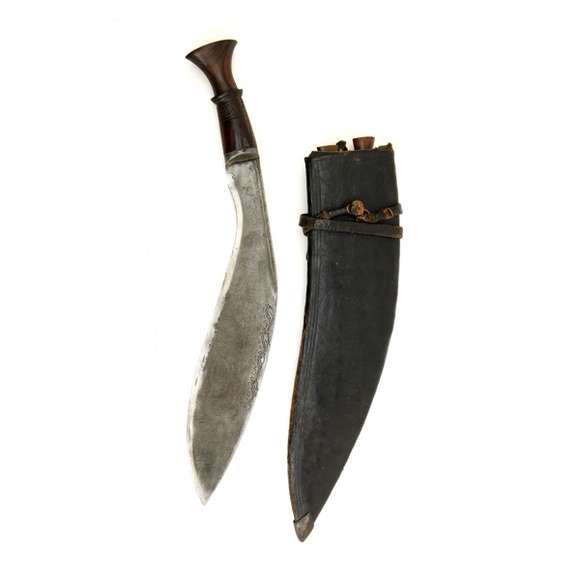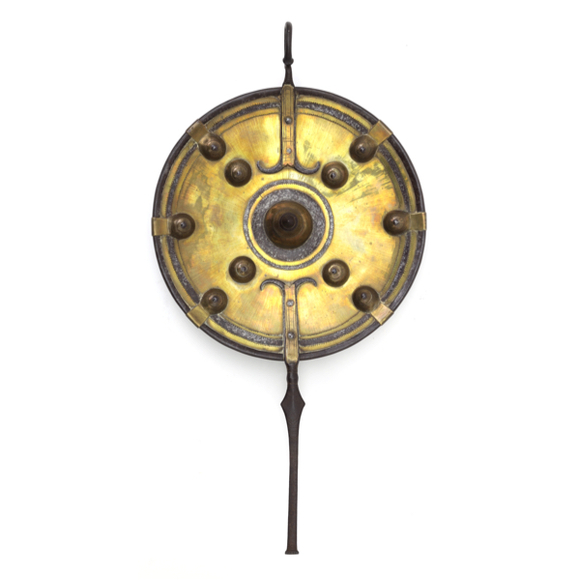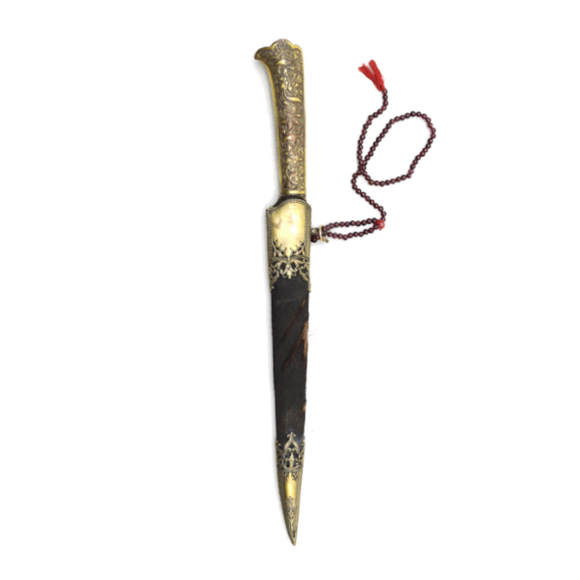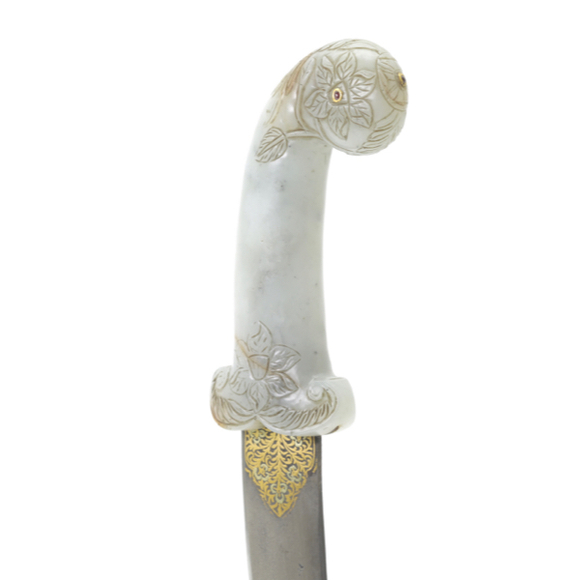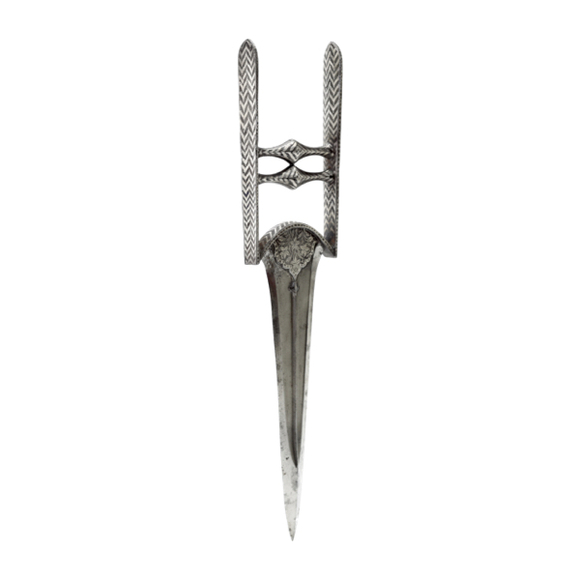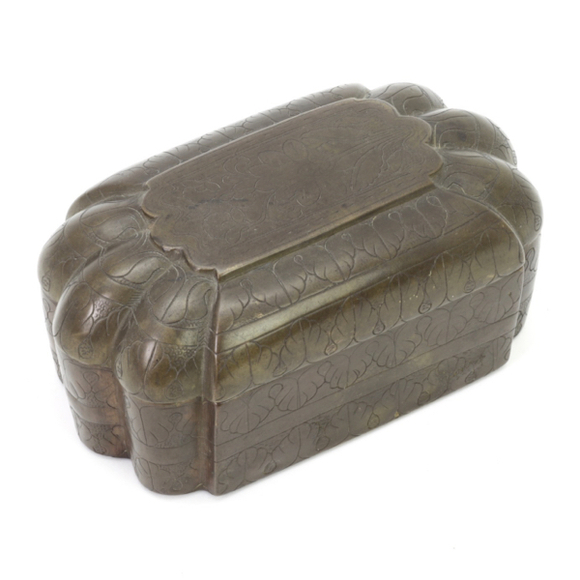Signed: Ricky Milnes, India 44, Burma 44, Ramree 45.

Total 72.5 cm
Effective 67.3 cm
(Inside nock to base head)
Length all 46 mm
Slender points 7 mm wide
Leaf heads 12 mm wide
Knife blade 11 mm wide
Slender points 29 grams each
Leaf heads 26 and 29 grams
Knife blade 28 grams
Central India
Steel, brass, reed, lacquer, pigments, sinew, wood
18th - 19th century
Description
An interesting set of five matching Indian arrows. The style of workmanship, shaft decoration, and matching lengths suggest they are from the same set but they do exhibit a variety of different heads.
Two of the arrows have sharp points with facetted heads, of octagonal cross-section. These arrows are fairly heavy and seem to be optimized for piercing mail armor. This may be the type of arrow that is called tarah-i-khār, thorn-shaped.1
Two are leaf-shaped arrowheads, both of slightly different design. Such heads are best against very lightly unprotected targets or for small game hunting.
The last arrowhead is the most peculiar of them all, as it resembles a single-edged knife blade with a clipped tip. It is, by all means, a practical point, but the very deliberate way it resembles a knife does not seem to add to its functionality and will probably have symbolic meaning instead. 2
There are a number of washers behind each tanged arrowhead, 5 larger iron ones and 6 narrow brass ones. The heads are mounted on reed shafts.
The tails are decorated with delicate geometric patterns. Each shaft has remains of three feathers each, and ends in a typical Indian bulbous nock.
Dating/Attribution
They came with a handwritten label saying Marathi, 17th-18th century. Although I can't confirm the validity of this, I don't see a reason to dismiss the Marathi attribution either.
The fit of the head to the shaft and the style of decoration of these arrows suggests Central India, probably 18th or early 19th century.
Conclusion
An interesting set of arrows, presenting four different types of heads used by the same archer. The purpose of the slender heads seems obvious, that of the stranger single edged head remains to be ascertained.
Notes
1. See glossary article: Teer (arrows). Khar (خار) means "thorn" in Persian.)
2. The same can be said of the katar-shaped arrows that are seen sometimes.






Peculiar shield with catching hook, used by the Santali people of Bengal.

